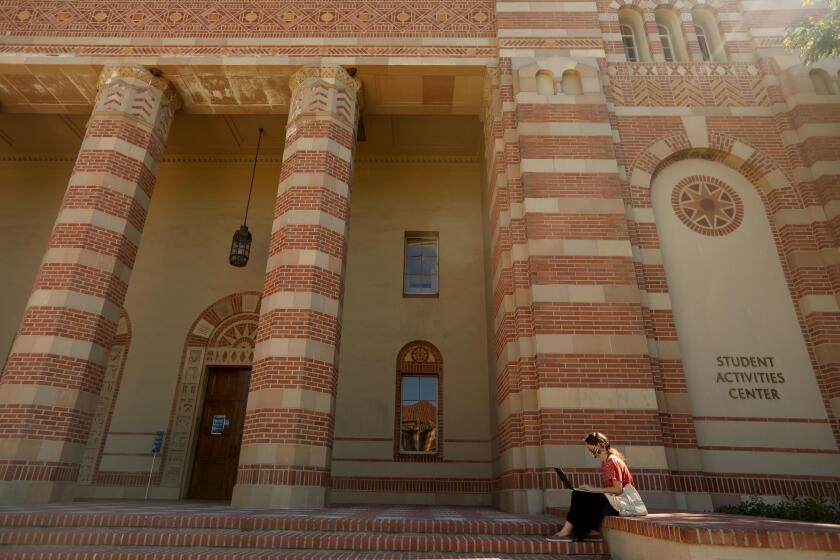California’s birthrate falls to its lowest level on record
- Share via
California’s birthrate dropped to its lowest level ever in 2016, according to data released by the state’s Department of Finance.
Between July 2015 and July of this year, there were 12.42 births per 1,000 Californians, the agency said this week. The last time the birthrate came close to being that low was during the Great Depression, when it hit 12.6 per 1,000 in 1933.
But, unlike after the Depression, birthrates haven’t bounced back quickly as the economy has picked up.
California has been experiencing a years-long downward trend that likely stems from the recession, a drop in teenage pregnancies and an increase in people attending college and taking longer to graduate, therefore putting off having children, said Walter Schwarm, a demographer at the Department of Finance. When people do complete their schooling, they’re interested in taking some time to pursue their careers or other goals, he said.
“Eventually you think about having a child and by this point in time you’re in your early 30s,” he said. Because that’s also when women’s fertility begins to decrease, they end up having fewer children than if they’d started in their 20s, he said.
Similarly, the national birthrate began falling in 2008 and continued to do so through 2013, when it hit a record low of 12.4 per 1,000 people. The rate increased only slightly in 2014, the most recent year for which there is data, to 12.5.
There are a number of reasons for the low rates, experts say: teen pregnancies have fallen dramatically in recent years; the recession led to a decrease in immigration, and immigrants have historically had more kids; plus, immigrants are attending college more, with 50% of recent immigrants in California holding a bachelor’s degree, said Schwarm.
And for people in their 20s who would be expected to have kids, it’s probably been particularly difficult to recover from the recession, experts say. That group attended college during the worst of the downturn and were likely primarily focused on finding jobs.
Between 2007 and 2012, birthrates among women in their 20s declined more than 15%, according to a report from the Urban Institute. That’s in part because fewer unmarried women in their 20s had kids on top of fewer choosing to get married, which is associated with having more children.
“If these low birthrates to women in their twenties continue, the U.S. might eventually face the type of generational imbalance that currently characterizes Japan and some European countries, but it is too early to predict or worry about that eventuality,” the 2015 report said.
Millennials could begin to have more kids in their 30s and compensate for the current drop, experts say. If that happens, people in their early 30s could make up the bulk of new parents for the first time in U.S. history, said Nan Astone, report author and senior fellow at the Urban Institute.
But she added that it’s been a while since the recession ended and, though birthrates may have increased a little, “I don’t think we’re at anything like compensation.”
For the U.S. though, generational imbalance isn’t as big a concern because there’s typically an influx of immigrants that keeps the working-age population large, she said.
“It’s a little too early to panic,” Astone said. “The U.S. has a lot more room to have low birthrates than either Japan or Europe.”
Schwarm pointed out that California is a little different from the rest of the nation. Already, people in their early 30s here have the highest birthrates.
“That might reflect greater opportunities or greater difficulties in setting up a family here in California,” he said.
Schwarm said he expects the state’s birthrate will continue to be low for the next few years — and might even drop a little further.
That will likely change, however, when people born in the late 1980s and ‘90s begin having children as they approach their 30s.
They’re a giant cohort in the state — 1990 had the most births in California history, with 1991 and 1992 close behind. So, if and when they do decide to have children, it will likely affect the state’s overall birthrate, Schwarm said.
“That will bring everything back up,” he said.
Follow me on Twitter: @skarlamangla
ALSO
The U.S. is no stranger to interfering in the elections of other countries
A peaceful lake? Or the next Santa Monica Pier? Silver Lake Reservoir’s future is up for debate
UPDATES:
1:30 p.m.: This article was updated with additional information on the national birth rate.
This article was originally published at 7:30 a.m.
More to Read
Sign up for Essential California
The most important California stories and recommendations in your inbox every morning.
You may occasionally receive promotional content from the Los Angeles Times.











